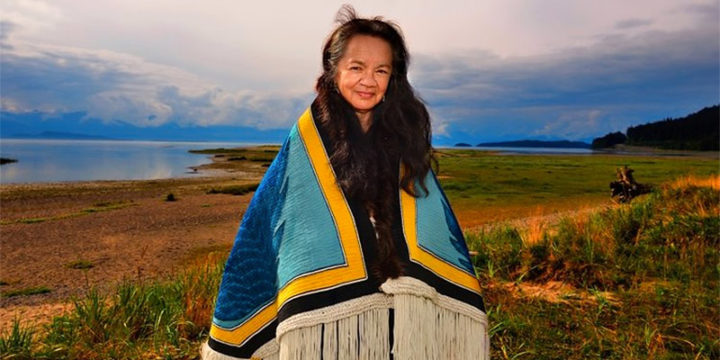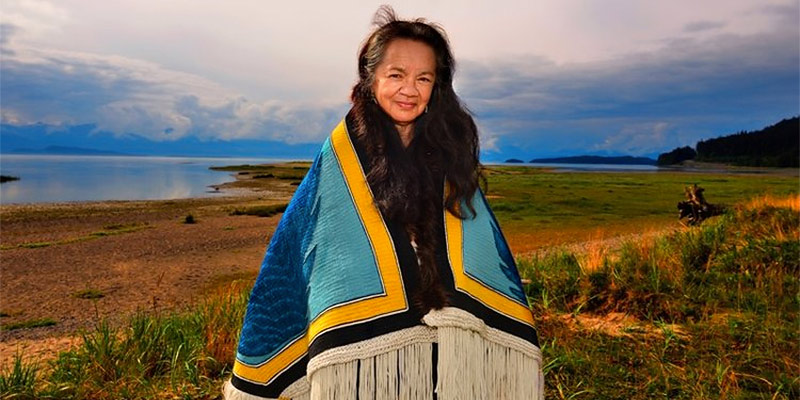…One Nation under God, indivisible, with liberty and justice for all.
— From the ‘Pledge of Allegiance,’ as adopted by the US Congress in 1954.
We gathered for a family dinner on Thursday evening at the home of my friend Cynda Green. My son, Kahlil, and his wife, Miki, and their two children had come up from Santa Fe to celebrate the week of July 4th here in Pagosa — as they do most every July 4th. Also joining us for dinner were my daughter, Ursala, and her husband, Chris, and their two children.
A few members of the family were not present. My daughter Lily, her husband Ishmael, and their five children, living in Alaska, weren’t able to join us.
Also missing was the mother of my children, Clarissa Rizal, who passed away a year and half ago.

When she died, Clarissa was at the pinnacle of a 35-year career as an American Indian artist. She had been recognized, a few months earlier, by the National Endowment for the Arts with a National Heritage Fellowship, a prestigious award that recognizes the recipients’ artistic excellence, and supports their continuing contributions to our nation’s traditional arts heritage. In particular, Clarissa had been so honored for her efforts to revive the art of Chilkat weaving — an art form that developed in Southeast Alaska perhaps three hundred years ago, and had nearly died out in the mid-1980s, when Clarissa chanced to study with the last traditional Chilkat weaver, Jennie Thlunaut.
From Clarissa’s website:
If all of the Tlingit elders I knew as a child and young adult such as my maternal grandparents Juan and Mary Sarabia, and all my aunts and uncles, and my first Tlingit “teacher” Harry K. Bremner Sr. and my Chilkat weaving teacher/mentor Jennie Thlunaut, saw the Tlingit ceremonial regalia and contemporary art I have created for nearly 40 years, would they be basically pleased with my work? If so, then I know I have listened to them and followed through with their guidance. If not, I wonder what additional guidance would they provide for me?
— Clarissa Rizal, April 2015
As I mentioned in Part Two, Clarissa was among the thousands of human beings recognized by the US government as an authentic “American Indian” due to her ancestry, which included — in her particular case — one “full-blooded American Indian” out of her four grandparents. Clarissa thus had a blood quantum of 1/4, the minimum measurement to qualify for certain federal programs aimed at helping American Indian tribal members.
Had she so chosen, Clarissa could have claimed a blood quantum of 1/2, as an Asian American, since two of her four grandparents were native to the Philippines. Or she could have chosen to claim a blood quantum of 1/4 “Jewish American.” But those measures are meaningless in the US, because of our complicated history — which, in the case of the American Indians, was largely a history of murder and oppression.
Our government does not measure “Asian blood quantum” or “Jewish blood quantum.” Only American Indians are ranked by such a measurement, here in the US.
By the 1970s, the opportunities open to American Indians had taken a turn for the better, economically speaking — especially in certain areas of the US. In Alaska, the human beings able to claim at least 1/4 blood quantum could enroll in one of the new “Native corporations” that had received benefits via the federal Alaska Native Claims Settlement Act. For Native Alaskan artists, a burgeoning tourism trade and national fascination with American Indian artwork provided opportunities that had barely existed a generation earlier — including, in Clarissa’s case, a subsidized education at the Institute of American Indian Art in Santa Fe.
In the ‘Lower 48’ (as Alaskans refer to the continental US) the economic conditions were undergoing a change for other Indian tribes. Some, like the Southern Ute Indian tribe, had seen significant benefits from oil and gas development on their tribal lands. Other tribes were developing new income streams, by building gambling casinos on their reservations, and also by exploiting America’s passion for tourism.
But the overall outlook for American Indians was not completely positive. According to the website, IndianYouth.org:
Many American Indian communities are impoverished, with some tribes reporting unemployment as high as 85%. Existing jobs are found mainly within the tribal government, Bureau of Indian Affairs, state social services, the school systems, and the Indian Health Service (IHS) Hospital. Additionally, years of failed government policies have left reservation economies with limited economic opportunity…
Native Americans have the lowest employment rate of any racial or ethnic group in the United States (Bureau of Labor Statistics, 2012). In the poorest Native counties, only about 1/3 of men in Native American communities have full-time, year-round employment (Beal, 2004)…
Native students are the only student population that did not improve their reading and math testing scores in grades 4 and 8 from 2005-2011 (The Education Trust, 2013). High school graduation rates are also among the lowest of any population. In the states with the most American Indian and Alaska Native students, less than 50% of Native students graduate, on average. (The Civil Rights Project, 2010)…
As of 2011, there were over 120,000 tribal homes lacking access to basic water sanitation services (EPA, 2012). It is estimated that almost 1 in 10 American Indian homes are without safe and reliable water (Indian Health Service, 2011).
It’s not a pretty picture, in many Indian communities.
As we shared dinner last night, we talked about blood quantum, and the divisions put in place by our beliefs about race and heritage. Ursala and Kahlil have both benefited, in terms of college scholarships and other opportunities, from their American Indian bloodline. They recognize that many of the human beings who most warmly embrace the federal “blood quantum” policies are Indian tribal members themselves.
If you visit the Clarissa Rizal website, you will find numerous mentions of Clarissa’s Alaskan Indian heritage. You can also find tributes to her non-Native grandparents who hailed from the Philippines and from Minnesota. How can we measure the importance of sometimes-varied family bloodlines, as they flow together into the form of a unique individual? What were once tributaries form a river. Do we really need to separate out the molecules of water and define their sources? Aren’t we, at the heart of the matter, just human beings struggling to live together?
And often failing in that struggle.
Americans have always embraced division and separation, right alongside our fascination with equality and unity. The people of European descent who wrote the US Constitution demanded that the person elected to the US Presidency must be “a natural born Citizen” — that is to say, a person born within the political boundaries of the US.
A “native” person.
Theirs is no scientific evidence that I’ve ever come across indicating that persons born within the political limits of the US have any special leadership qualities, or any particular loyalty to his or her fellow citizens. Nearly all of the most horrible crimes committed within our boundaries have been committed by US citizens, and that includes the numerous crimes committed against the American Indian nations who inhabited this continent long before the people who wrote the US Constitution — giving Congress the power “…to regulate Commerce with foreign Nations… and with the Indian Tribes…”
We love to draw distinctions.
“You belong to that group, and I belong to this group, and I will defend that distinction with my life, if necessary. I will defend that distinction with your life, if necessary…”

